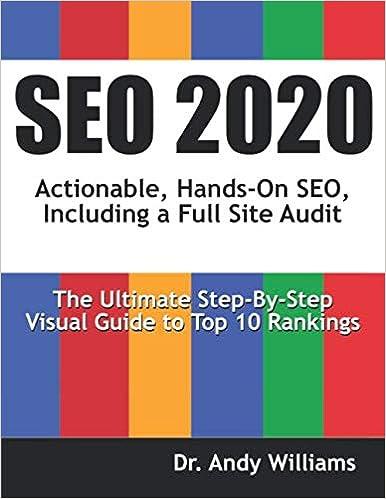Question
Activity-Based Costing Versus Traditional Approach. Carson Company produces a regular computer monitor that sells for $175 and a premium computer monitor that sells for $300.
Activity-Based Costing Versus Traditional Approach.
Carson Company produces a regular computer monitor that sells for $175 and a premium computer monitor that sells for $300. Last year, total overhead costs of $3,675,000 were allocated based on direct labour hours. A total of 63,000 direct labour hours were required last year to build 36,000 regular monitors (1.75 hours per unit), and 42,000 direct labour hours were required to build 12,000 premium monitors (3.50 hours per unit). Total direct labour and direct materials costs for last year were as follows:
Regular Monitor | Premium Monitor | |
Direct materials | $1,908,000 | $ 900,000 |
Direct labour | $1,728,000 | $1,200,000 |
The management of Carson Company would like to use activity-based costing to allocate overhead rather than one plant-wide rate based on direct labour hours. The following estimates are for the activities and related cost drivers identified as having the greatest impact on overhead costs:
Estimated Cost Driver Activity | ||||||
Activity | Cost Driver | Estimated Overhead Costs | Regular | Premium | Total | |
Purchase orders | Number of purchase orders | $ | 1,200,000 | 400 | 600 | 1,000 |
Production setups | Number of setups | 1,125,000 | 120 | 30 | 150 | |
Quality inspections | Inspection hours | 750,000 | 3,600 | 8,400 | 12,000 | |
Packaging and shipping | Number of units shipped | 600,000 | 36,000 | 12,000 | 48,000 | |
Total | $ | 3,675,000 | ||||
Required:
- Calculate the direct materials cost per unit and direct labour cost per unit for each product.
- Using the plant-wide allocation method, calculate the predetermined overhead rate and determine the overhead cost per unit allocated to the regular and premium monitors.
- Using the plant-wide allocation method, calculate the product cost per unit for the regular and premium monitors. Round results to the nearest cent.
- Using the activity-based costing allocation method, calculate the predetermined overhead rate for each activity. (Hint: Step 1 through step 3 in the activity-based costing process have already been done for you; this is step 4.) Round results to the nearest cent.
- Using the activity-based costing allocation method, allocate overhead to each product. (Hint: This is step 5 in the activity-based costing process.) Determine the overhead cost per unit. Round results to the nearest dollar.
- What is the product cost per unit for the regular and premium monitors?
- Calculate the per unit profit for each product using the plant-wide approach and the activity-based costing approach.
- How much did the profit per unit change for each product when moving from the plant-wide approach to the activity-based costing approach? What caused this change?
Step by Step Solution
There are 3 Steps involved in it
Step: 1

Get Instant Access to Expert-Tailored Solutions
See step-by-step solutions with expert insights and AI powered tools for academic success
Step: 2

Step: 3

Ace Your Homework with AI
Get the answers you need in no time with our AI-driven, step-by-step assistance
Get Started


